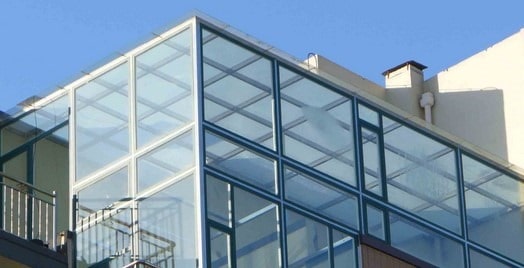Back to: Basic Technology JSS 1
Welcome to class!
In today’s class, we will be talking about building and building materials. Enjoy the class!
Building and Building Materials Types
A building is a relatively permanent enclosed construction over a plot of land, having a roof and usually windows and often more than one level, used for any of a wide variety of activities, as living, entertaining, or manufacturing.

It is a structure constructed using any type of material(s) and for whatever purpose, be it for residential, commercial, industrial or other.
Building material is any material which is used for construction purposes. Many naturally occurring substances, such as clay, rocks, sand, and wood, even twigs and leaves, have been used to construct buildings.
Types of building
- FIRE RESISTIVE
Walls, partitions, columns, floors and roofs are non-combustible. Designed to withstand the effects of fire for a limited time and prevent fire spread. Made of poured concrete and steel.

- NONCOMBUSTIBLE
Walls, partitions, columns, floors and roofs are non-combustible but provide less fire resistance. Does not withstand the effects of fire or fire spread.
“Non-combustible” refers to the fuel the building contributes, not its resistance to spread of fire. Least stable in terms of collapse, when exposed to fire.
- HEAVY TIMBER
Walls of masonry or other non-combustible walls with a 2-hour fire rating. Interior columns, beams and girders are heavy timber (minimum 8 x 8). Floors and roofs are heavy planks (3 x 6 minimum). Extremely heavy fire load yet resistant to ignition and collapse due to mass of structural members.
Once ignited, it requires large volumes of water to extinguish.
- WOOD FRAME
Walls, floors, and roofs that are made wholly or in part of wood. Structure contributes significantly to fire load yet is reasonably resistant to collapse. (Exception, lightweight construction)
Types of building materials
Aluminium
Uses – Mouldings, window frames
Advantages – Strong, lightweight, can be recycled
Disadvantages – Production is very energy-intensive and polluting.
Earth-wise tips – Avoid, or use recycled aluminium.
Brick (clay)
Uses – Walls, paths, driveways
Advantages – Versatile, good thermal mass
Disadvantages – Production is energy-intensive and uses non-renewable resources.
Earth-wise tips – Look for recycled bricks.
Concrete
Uses – Floors, walls, supports
Advantages – High thermal mass, strong, durable, economical, resists termites and earthquakes
Disadvantages – Production involves quarrying and creates greenhouse emissions; poor insulator, needs reinforcing.
Earth-wise tips – Use autoclaves aerated concrete (AAC), which is lightweight, energy-efficient and non-toxic.
Fibre cement sheeting
Uses – Cladding
Advantages – Low embodied energy, light, inexpensive, good thermal properties, can be rendered
Disadvantages – Not as strong as some other options; associated with cheap housing and asbestos (no longer used).
Earth-wise tips – Try lime wash as a surface treatment: it’s suitable and environmentally benign.
Glass

Uses – Windows, doors, skylights; bricks
Advantages – Stable, long-lasting, efficient, recyclable
Disadvantages – Production is energy-intensive, uses non- renewable minerals.
Earth-wise tips – Seek out recycled windows; buy energy-efficient new glass.
Plastics
Uses – Window frames, water pipes, gutters, floor and wall coverings.
Advantages – Light, durable, resistant to damp, water and pests.
Disadvantages – Made from non-renewable resources; production is energy
intensive and polluting; may off-gas.
Earth-wise tips – Look for renewable alternatives; avoid PVC – opt for PVC-free polypropylene or polybutylene instead.
Steel
Uses – Frames and supports.
Advantages – Strong, economical, durable, recyclable.
Disadvantages– Production is energy-intensive and highly polluting; coatings are often polluting.
Earth-wise tips – Buy recycled steel or opt for renewable timber.
Timber

Uses – Floors, walls, supports and roof frames.
Advantages – Strong, easy to work with, versatile, potentially renewable, biodegradable.
Disadvantages – Some timber is non-renewable; often treated with toxic chemicals.
Earth-wise tips – Use recycled wood or timber from sustainable sources, with no chemical treatments.
In our next class, we will be talking about the Uses of Building Materials. We hope you enjoyed the class.
Should you have any further question, feel free to ask in the comment section below and trust us to respond as soon as possible.

where is the take quiz?
To take a quiz for any class, scroll down and you will see “Take Quiz” beneath the class content.
It is that simple after class.